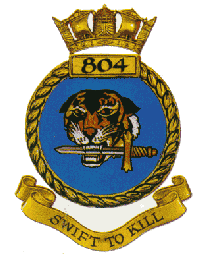
800 Naval Air Squadron was a Royal Navy Fleet Air Arm carrier-based squadron formed on 3 April 1933 by amalgamating No's 402 and 404 Flights.
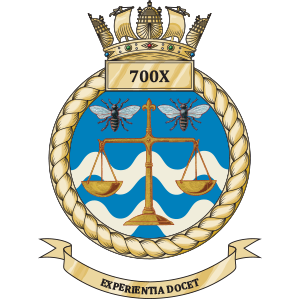
700 Naval Air Squadron is an experimental test squadron in the Royal Navy’s Fleet Air Arm.
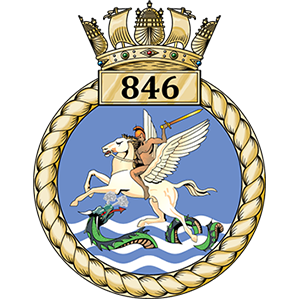
846 Naval Air Squadron is a squadron of the Royal Navy's Fleet Air Arm.

892 Naval Air Squadron was a carrier-based fighter squadron of the British Royal Navy's Fleet Air Arm. It was formed in 1943, flying Grumman Martlets, and was the only operational Fleet Air Arm squadron to fly the McDonnell Douglas Phantom FG.1.
801 Naval Air Squadron (NAS) was a Fleet Air Arm squadron of the Royal Navy formed in 1933 which fought in World War II, the Korean War and the Falklands War.

RNAS Hatston, also called HMS Sparrowhawk, was a Royal Naval Air Station, one mile to the north west of Kirkwall on the island of Mainland, Orkney, Scotland. It was located near the strategically vital naval base of Scapa Flow, which for most of the twentieth century formed the main base of the ships of the Home Fleet.
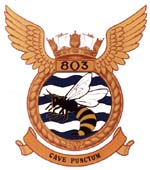
803 Naval Air Squadron was a Royal Navy Fleet Air Arm squadron.
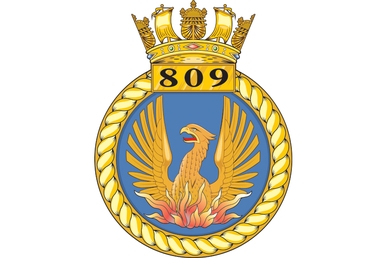
809 Naval Air Squadron is a squadron of the Fleet Air Arm of the United Kingdom. It was first formed in 1941 and flew in the Soviet Union, the Mediterranean and the Far East during the Second World War. After active service during the Suez Crisis, 809 was disbanded in 1959. Reformed in 1963 to fly Blackburn Buccaneers, the squadron was disbanded briefly in 1965-66, and then again in 1978. A brief period during the Falklands War saw 809 reformed to bring Sea Harrier FRS.1 aircraft south to the UK task group and to fly from HMS Illustrious.
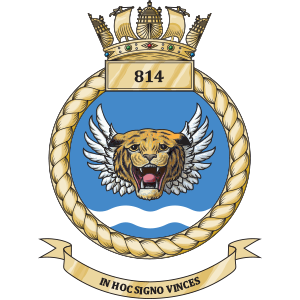
814 Naval Air Squadron or 814 NAS, nicknamed the Flying Tigers, is a squadron of the Royal Navy Fleet Air Arm. It is currently equipped with the AgustaWestland Merlin HM2 anti-submarine warfare helicopter and is based at Royal Naval Air Station (RNAS) Culdrose in Cornwall. The squadron was formed in December 1938 and has been disbanded and reformed several times.
802 Naval Air Squadron was a Naval Air Squadron of the Royal Navy's Fleet Air Arm.
899 Naval Air Squadron was a squadron of the Fleet Air Arm of the United Kingdom.
882 Naval Air Squadron was a Naval Air Squadron of the Royal Navy's Fleet Air Arm. It was formed as a carrier based fighter squadron in July 1941 and served through the rest of the Second World War. It took part in the British invasion of Madagascar and Operation Torch, the Anglo-American invasion of North Africa in 1942, and in the invasion of Southern France in August 1945, also taking part in operations in the Aegean and off Norway. It was disbanded after the end of the war, in October 1945.

885 Naval Air Squadron was a Naval Air Squadron of the Royal Navy's Fleet Air Arm. First formed on 1 March 1941, the squadron served as a fighter squadron during the Second World War. It operated in the Mediterranean in 1942–43, where it took part in Operation Torch, the Anglo-American invasion of French North Africa, the Allied invasion of Sicily and the Allied invasion of Italy. In 1944 it took part in the Allied invasion of Normandy, spotting for Allied artillery bombardments and in 1945, was deployed as part of the British Pacific Fleet. It was abolished for the last time on 27 September 1945.
738 Naval Air Squadron was a Naval Air Squadron of the Royal Navy's Fleet Air Arm. It was initially active from 1943 to 1945 as a training squadron for USA aircraft types used by the Fleet Air Arm. Reformed in 1950, it continued to form part of the Fleet Air Arm training programme until its last disbandment in 1970.

748 Naval Air Squadron was a Naval Air Squadron of the Royal Navy's Fleet Air Arm. It was initially formed, at RNAS St Merryn, as a Fighter Pool Squadron, before becoming No. 10 Naval Operational Training Unit. The squadron moved to RNAS Henstridge in February 1944 and then onto RNAS Yeovilton in the March. In September 1944, 748 NAS moved to RNAS Dale, in Wales, remaining for just under twelve months, before moving back to RNAS St Merryn in August 1945, where it disbanded in February 1946. During its existence, the squadron was equipped with numerous aircraft and various marks, operated by the Fleet Air Arm.
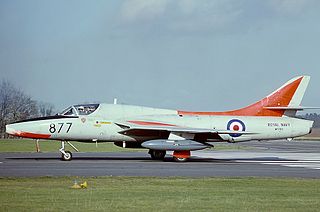
759 Naval Air Squadron was a Naval Air Squadron of the Royal Navy's Fleet Air Arm. It was created on November 1st, 1939 and was disbanded on December 24, 1969. It was initially intended as a Telegraphist Air Gunner Training Squadron but became a Fighter School and Pool Squadron in 1939, at RNAS Eastleigh. It operated out of RNAS Yeovilton from 1940 to 1946, as part of the Naval Air Fighter School. In 1943 a detachment operated out of RNAS Angle, working with 794 NAS and known as the Naval Air Firing Unit. It was again the Naval Air Fighter School upon reformation in 1951 and disbandment in 1954, firstly at RNAS Culdrose and then moving to RNAS Lossiemouth, in 1953. The squadron reformed again, this time at RNAS Brawdy in 1963, as the Naval Advanced Flying Training School, before finally disbanding in 1969.
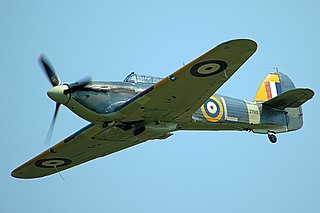
760 Naval Air Squadron is a Naval Air Squadron of the Royal Navy's Fleet Air Arm. The squadron first formed on 1 April 1940 as No.1 Fleet Fighter Pool with a variety of aircraft types before standardising in 1941 on the Sea Hurricane. In this role it disbanded on 31 December 1942. In May 1944 760 NAS briefly reformed as an Anti-Submarine Operational Training Squadron before disbanding into 766 Naval Air Squadron in November. Reformed again as part of No.1 Naval Air Fighter School in April 1945 it converted fighter pilots to the Corsair and then the Seafire until 23 January 1946 when it disbanded.

764 Naval Air Squadron was a Naval Air Squadron of the Royal Navy's Fleet Air Arm. It initially formed in April 1940, at RNAS Lee-on-Solent, as an Advance Seaplane training Squadron. The Squadron moved to RAF Pembroke Dock in July 1940, and later to RNAS Lawrenny Ferry, in October 1941 and remaining there until the Squadron disbanded in November 1943. It reformed at RNAS Gosport, in February 1944, as the User Trials Unit, however, the Squadron was decommissioned for the second time in September 1945. 764 NAS reformed again, at RNAS Lossiemouth, in May 1953, where it became an Advanced Training Unit. It moved to RNAS Yeovilton in September 1953, where it received its first jet aircraft. In November 1954 the Squadron disbanded.

768 Naval Air Squadron was a Naval Air Squadron of the Royal Navy's Fleet Air Arm.
